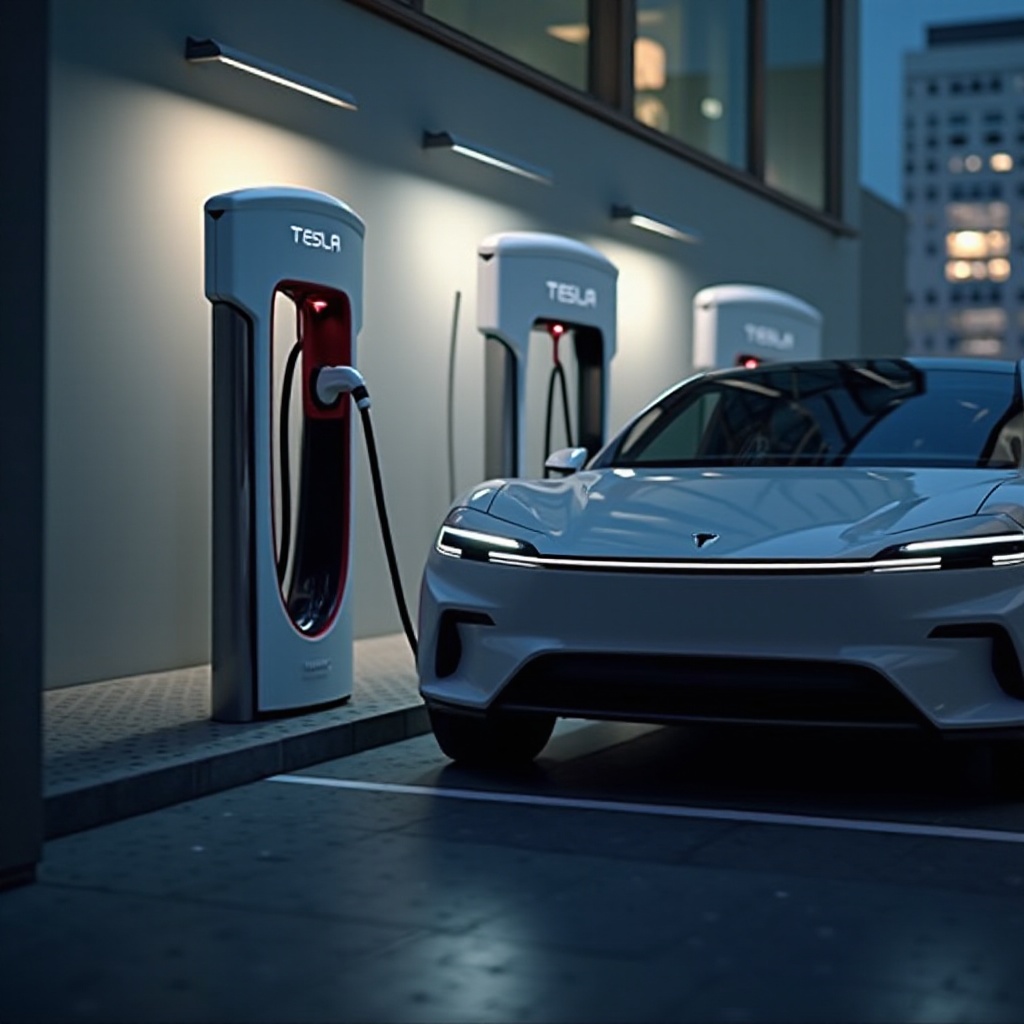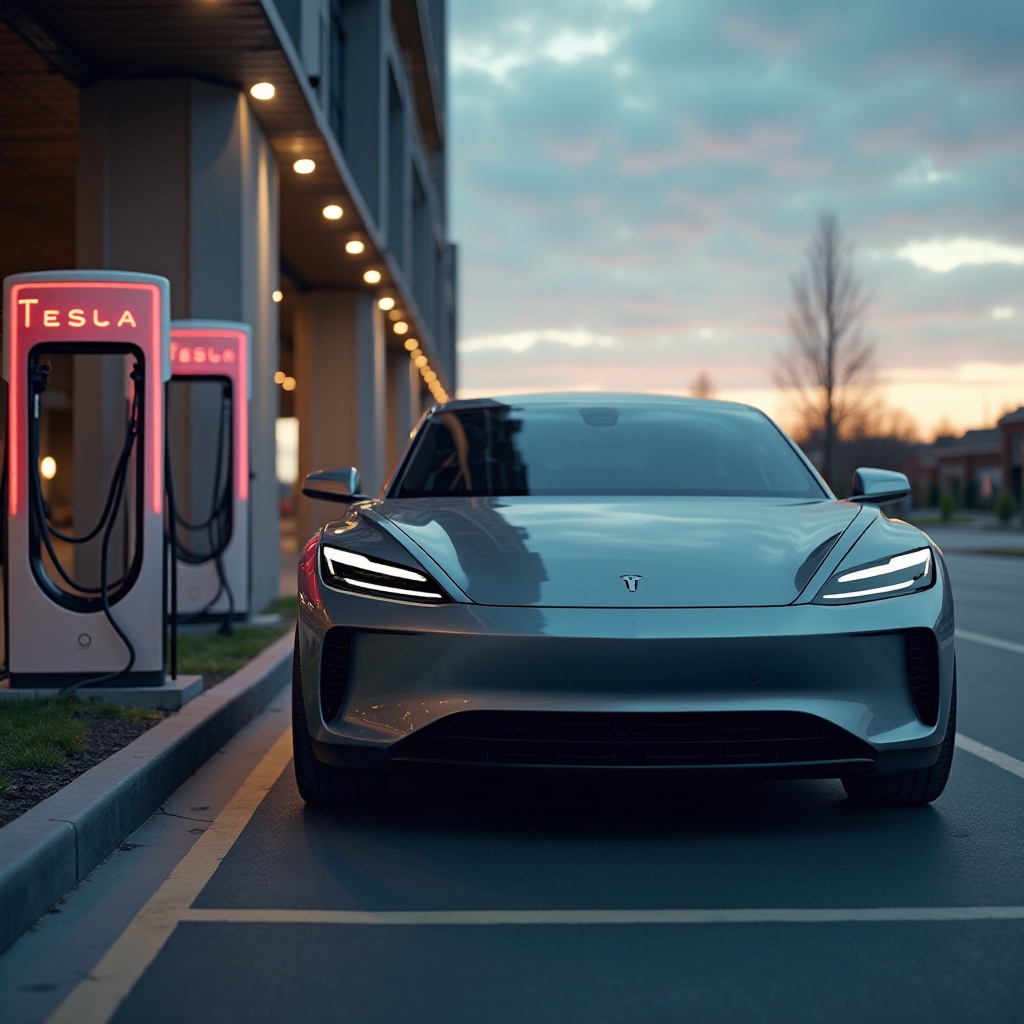Introduction
Electric vehicles (EVs) continue to revolutionize the automotive industry, making sustainability a primary goal for everyone. Two leading companies in this market are Rivian and Tesla, both known for their innovative electric trucks and high-speed charging networks, respectively. Understanding how fast a Rivian vehicle can charge at a Tesla Supercharger is vital for long-distance travel planning. This article will explore the technical aspects, real-world user experiences, and future possibilities of this exciting technological compatibility.

Overview of Rivian and Tesla Superchargers
Rivian, an American electric vehicle automaker, specializes in electric adventure vehicles like the R1T pickup truck and R1S SUV. These vehicles feature robust capabilities, making them suitable for various terrains and extensive travel needs. On the other hand, Tesla has established a robust network of high-speed Superchargers around the globe, making it easier for Tesla owners to travel long distances with minimal charging downtime.
While Tesla Superchargers are primarily built for Tesla vehicles, the increasing demand for cross-compatibility among different EV manufacturers has opened avenues for interaction. Tesla’s Superchargers use proprietary technology that makes them unique and super-efficient compared to other EV charging stations.

Compatibility and Technical Details
Understanding the compatibility and technical details is crucial for EV owners. Tesla Superchargers were initially exclusive to Tesla cars, featuring the company’s proprietary connector. As of 2024, Tesla has begun adapting its network to be compatible with other EVs, including Rivian vehicles, thanks to the widespread demand for universal charging solutions.
- Connector and Adapter Requirements:
- Rivian vehicles typically use CCS (Combined Charging System), while Tesla’s Superchargers use a proprietary connector.
-
An adapter is necessary for Rivian owners to utilize Tesla Superchargers. These adapters bridge the technology gap, allowing for seamless energy transfer.
-
Software Integration:
- Advanced software protocols ensure safety and efficiency during the charging process.
-
Tesla’s network can now recognize some non-Tesla vehicles, ensuring that energy transfer is correctly managed.
-
Charging Protocols:
- Superchargers operate on high-voltage systems. Adjustments may be required to match the voltage specifications of Rivian vehicles.
Charging Speed Comparison for Rivian at Tesla Superchargers
Charging speed is a critical factor for any EV user. Tesla Superchargers are designed to provide rapid charging, often going from 10% to 80% capacity in just 30 minutes for Tesla vehicles. However, several factors influence how Rivian vehicles perform at these stations:
- Adapter Efficiency: The use of an adapter can impact the overall efficiency of the charging process, potentially leading to slower charge times compared to native Tesla vehicles.
- Vehicle Battery Technology: Rivian’s battery management systems are optimized for different charging standards. This can affect the maximum speed at which the battery can safely receive charge from a Tesla Supercharger.
- Station Power Output: Not all Tesla Superchargers provide the same power levels, ranging from 72 kW to 250 kW. The charging speed for Rivian vehicles will vary depending on the Supercharger’s rating.
Based on data from early adopters, Rivian vehicles can achieve charging rates approximating 80-100 miles of range per 10 minutes of charging, akin to some slower Tesla charge rates but substantial for non-Tesla compatibility. Advanced Tesla V3 Superchargers (250 kW capability) provide the best performance and compatibility thanks to their higher output and smarter software protocols.

Real-World User Experiences
Real-world user experiences provide invaluable insights into how well the theoretical specs perform in practice. Early reports from Rivian users suggest mixed but generally positive experiences with Tesla Superchargers:
- Initial Setup: Many users found the initial setup intuitive, with some noting the need for specific adapters was a slight inconvenience but easy to manage.
- Charging Performance: Users reported satisfactory charging speeds with some variations based on Supercharger location and vehicle battery status.
- Convenience: Many Rivian drivers appreciated the widespread availability of Tesla Superchargers, providing a reliable option for long-distance travel.
For instance, one Rivian R1T owner detailed a cross-country trip leveraging Tesla’s Superchargers. Although he noted slightly slower charging speeds than Tesla-native vehicles, the convenience and accessibility of the stations made the journey considerably smoother.
Future of EV Charging Compatibility
The future of EV charging compatibility looks promising. As technology advances and consumer demand grows, more third-party EV manufacturers can expect to integrate with Tesla’s Supercharger network. Several initiatives are underway:
- Standardization of Charging Ports: There are calls within the EV community for industry-wide standardization of charging ports, which could eliminate the need for adapters and simplify the user experience.
- Enhanced Software Compatibility: Ongoing advancements in software will facilitate more efficient and safer energy transfer between different EVs and Superchargers.
- Expanded Networks: Tesla plans to expand its Supercharger network, enhancing access for all EV users, including Rivian owners.
Future projects may see a consortium of automakers working collectively to build a universal charging network, breaking down existing barriers and fostering widespread EV adoption.
Conclusion
The integration of Rivian vehicles with Tesla Superchargers marks a significant milestone in the EV landscape. While there are some limitations and requirements, such as the need for specific adapters, the overall experience is largely positive. Rivian owners can expect to benefit from the extensive Tesla Supercharger network, making long-distance travel more feasible than ever before.
Frequently Asked Questions
Can Rivian vehicles charge at Tesla Superchargers?
Yes, Rivian vehicles can charge at Tesla Superchargers using the appropriate adapters to bridge the charging technology.
What is the average charging speed for a Rivian vehicle at a Tesla Supercharger?
Rivian vehicles can achieve substantial charging speeds at Tesla Superchargers, approximating 80-100 miles of range per 10 minutes on V3 Superchargers.
Are there any special requirements or adapters needed for Rivian vehicles to use Tesla Superchargers?
Yes, using Tesla Superchargers with Rivian vehicles requires specific adapters due to the differences in charging connectors and protocols.
